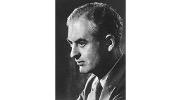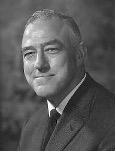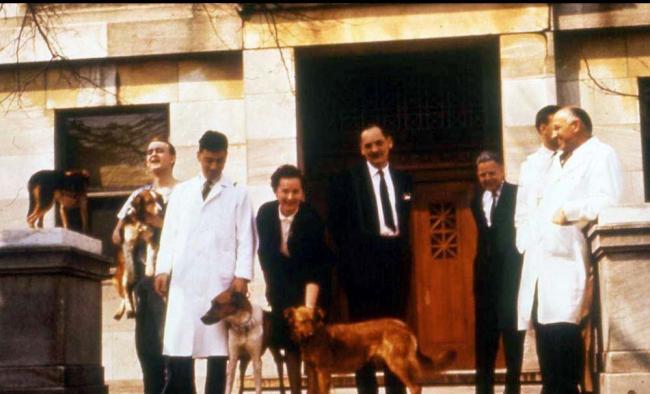The early evolution of kidney transplantation in the United Kingdom
Transplantation required enabling science, surgical prowess, astute medicine, immunology, pharmacology, moral ethics and legislation to enable acceptance in its current state. The parallel emergence of dialysis (physical, chemical and engineering principles) versus transplantation (surgical and immunological concepts) described by John Hopewell (1920-2015) further fuelled the controversy. The multifaceted nature of transplantation meant pioneers were embroiled in controversy despite the groundbreaking feat of the first identical twin transplant in Boston USA in 1954.
Experimental Immunology in Transplantation
The notion of transplantation began to move from a dream towards a reality with the pioneering work of Peter Medawar (1915-2007) a British Zoologist in Oxford, now recognised worldwide as the “Father of Transplantation”
 |
 |
His pivotal work during World War II led to a Nature publication on tolerance to skin grafts derived from genetically unrelated stocks following prenatal donor tissue (Nature 1953; 172:603). Rupert Billingham (1921-2002) and Leslie Brent (1925-2019) were the co-discoverers of acquired immunological tolerance. Medawar went on to win the Nobel Prize in 1960.
Surgical Transplantation
Michael Woodruff (1911-2001) in Edinburgh performed the first successful live donor transplant between identical twins in 1960 in the UK.

The first UK deceased donor transplant lasting eight months was performed by Frederick Peter Raper (1913-1966), in Leeds in 1959 five years after the Boston first.
Though Carel won the Nobel prize for enabling vasculature anastomosis technique, we must not forget the initial vasculature mapping by John Hunter (1728-1793) and the careful annotations by Henry Gray (1927-1981) in his world-famous anatomy textbook providing the basis for the surgical technique.
Immunosuppression in Transplantation
Beyond monozygotic twins, transplant survival in the 1950s-60s was abysmal, fraught with side effects and deaths due to the limited available immunosuppression techniques: high-dose steroids, radiation and/or surgical ablation of lymphoid tissue.
Mercaptopurine and latterly azathioprine re-purposed from rheumatology led to a shift in organ survival in the late 1960s and early 1970s. Experimental work on 6- mercaptopurine preventing antibody formation by rabbits from human serum led to the work of the British transplant surgeon, Roy Calne (1930-2024) in solid organ canine grafts published in the Lancet (Lancet 1960; 275, Issue 712)1, 417 – 418 10.1016/s0140-6736(60)90343-3).

Cyclosporin discovered in Norway in 1969 by Dr Hans Peter Frey was the next gamechanger for transplant survival. Following a lecture in London on cyclosporin in April 1976 by Jean Borel at the British Society of Immunology, it was trialled in animal models by Roy Calne and others. But its clinical use was enabled by Roy Calne and David White (Cambridge immunologist) travelling to Switzerland and persuading the manufacturers Sandoz and their financiers to persevere with the drug when there were doubts as to its clinical viability. This knight’s move was instrumental in enabling the use of cyclosporin worldwide by 1978 establishing undisputable improved outcomes for solid organ transplantation.
Ethics, Legislation and Restructuring in Transplantation
The introduction of the NHS (1948) was paramount in providing a structure enabling access to transplantation for all and a platform for legislation.
Transplantation gradually evolved from a scenario of surgeons retrieving kidneys and themselves transporting the organs to implant in patients on personal lists, to the development of transplant centres with concentrated expertise under regional health authorities.
The development of organ registers and donor cards (1971) provided a means for all to express their wishes before death. In 1986, a pioneering scheme Lifeline Wales was a local electronic database promoted by the late Princess of Wales. This was linked to form a UK-wide NHS Organ Donor Register in 1994 to co-ordinate organ supply and demand, an initiative driven Peter Cox’s family after his death in 1989. A key role was played by Chris Rudge as chair of the UK donation ethics committee and from 2008 the first National Clinical Director for Transplantation.
